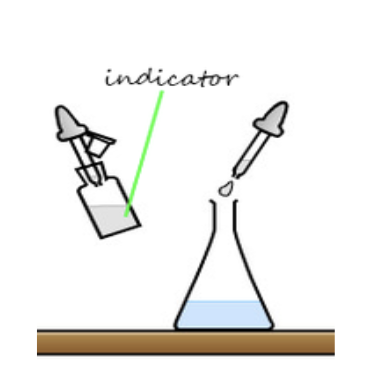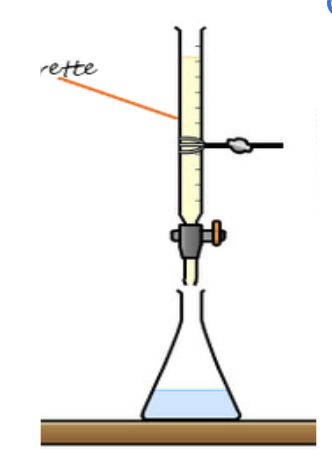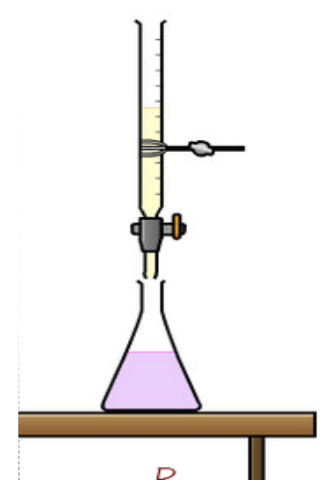Titrations
1/31
There's no tags or description
Looks like no tags are added yet.
Name | Mastery | Learn | Test | Matching | Spaced |
|---|
No study sessions yet.
32 Terms
What is the goal of titrations?
To determine the concentration of a solution with an unknown molarity
Steps of titrations:
Use a volumetric pipette to dispense a volume of the analyte; Add an indicator to the analyte. The indicator will be used to determine the equivalence point; Use a burette to add titrant to the analyte; Add titrant dropwise until a color change occurs
Draw a picture for this step: Use a volumetric pipette to dispense a volume of the analyte

Draw a picture for this step: Add an indicator to the analyte. The indicator will be used to determine the equivalence point

Draw a picture for this step: Use a burette to add titrant to the analyte

Draw a picture of this step: Add titrant dropwise until a color change occurs

Common applications of titrations:
Redox reactions and acid base reactions
Calculations involved in titrations:
M1V1=M2V2
What happens at the equivalence point?
Moles of analyte = moles of titrant
What is molarity?
Moles of solute over volume of solution in liters
Substance in flask w/ unknown molarity:
Analyte
Substance in buret w/ known molarity:
Titrant
What is titrant also called?
Standard solution
Where does the standard solution usually go?
Buret
Point in titration where flask solution changes color
Endpoint
Point in the titration where the moles of acid are equal to the moles of base or moles of titrant is equal to moles of analyte
Equivalence point
Common sources of error for titrations:
Overshooting titration, not using indicator, using incorrect indicator, cleaning and preparing buret incorrectly, reading buret incorrectly
What does overshooting the titration result in?
The concentration of the unknown solution in the flask appearing to be higher than it actually is
How to tell that we are overshooting the titration?
Too dark of a color at the end
Why does overshooting the titration result in the concentration of the unknown solution in the flask appearing to be higher than it actually is?
Because more titrant must be added
What does not using an indicator result in?
No perceivable endpoint
How to choose a correct indicator?
By making sure that pH at the equivalence point should be approximately equal to the pKa of the indicator
How to clean buret?
Rinse buret with distilled water, add a small amount of titrant to buret, swirl, and let it out through the stem
What is the consequence of improper cleaning of buret?
The titrant is more dilute, so the analyte will appear to be more concentrated than it is
How should buret be read?
From the bottom of the meniscus
How many decimals should buret readings have?
2
Species involved in acid-base vs redox titrations:
Acids and bases vs redox species
Reaction involved in acid-base titrations vs redox titrations:
Neutralization vs redox reaction
Indicators used in acid-base titrations vs redox titrations:
Weak acids and weak bases vs redox species themselves as self-indicators or redox indicators
Are acid-base titrations or redox titrations more common?
Acid-base titrations
Why are acid-base titrations more common?
They can take place between any form of strong or weak acid and base
Redox titrations are commonly seen among what?
d block elements